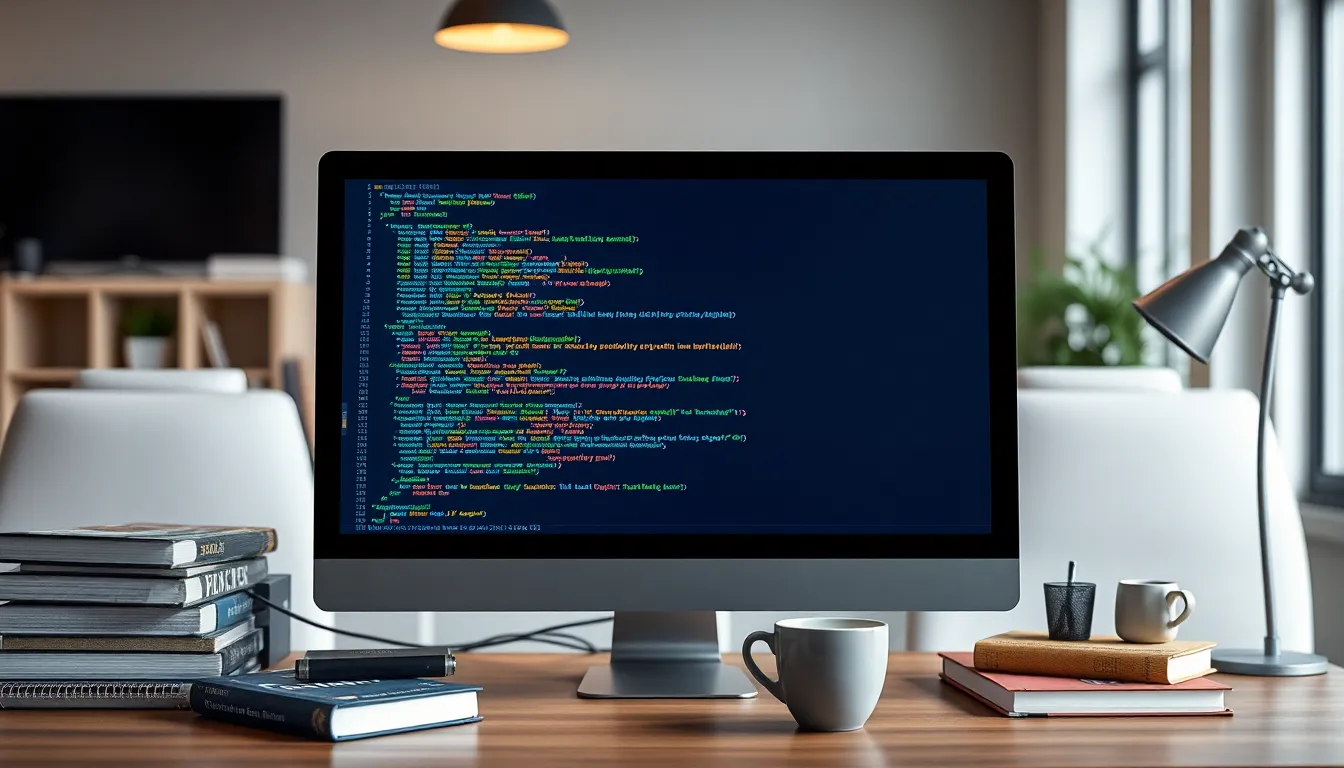Python continues to evolve, captivating developers with its versatility and ease of use. As one of the most popular programming languages, it regularly introduces updates that enhance functionality, improve performance, and streamline coding practices. Staying informed about these updates is crucial for developers looking to leverage Python’s full potential.
Table of Contents
ToggleOverview of Python Updates
Python releases updates regularly. Each version incorporates enhancements focusing on functionality, performance, and security. Python 3.10 introduced structural pattern matching, enabling developers to write clearer and more concise code. Python 3.11 enhanced performance significantly, with benchmarks indicating a speed increase of up to 10-60% compared to previous versions.
Key features in recent updates include:
- Typing enhancements: Python 3.10 included new syntax for type hinting, making it easier for developers to specify data types. Static type checking gained further improvement in Python 3.11.
- Error messages: Python 3.11 improved error messages, providing clearer guidance for debugging. This feature streamlines the development process.
- Standard library updates: Python’s standard library receives continuous updates, adding modules and improving existing ones. For instance, the asyncio library has undergone significant performance upgrades.
- Deprecations and removals: Older modules and features face deprecation in newer versions. Staying informed about these changes helps developers maintain compatibility.
As Python evolves, developers must adapt to these updates to leverage the language’s full potential. New features facilitate better coding practices, enhance performance, and improve overall productivity.
New Features in Recent Python Versions


Recent Python versions introduce significant enhancements that improve coding efficiency and performance. These updates refine syntax, enhance performance, and expand the language’s capabilities.
Improved Syntax and Features
Recent updates not only modernize syntax but also introduce new features that promote readability and usability. Python 3.10’s structural pattern matching enables clean code through simplified syntax for conditional logic. The introduction of the match statement allows developers to match complex data structures seamlessly. Additionally, Python 3.11 improved typing syntax, such as support for parameterized types and enhanced type hints for collections, which make code easier to understand and maintain. Improvements in error messages also aid debugging, offering more clarity regarding issues and allowing for quicker resolutions.
Performance Enhancements
Python 3.11 focused heavily on performance gains, demonstrating speeds up to 60% faster than its predecessor. This increase is achieved through several optimizations, like improved function calls and enhanced internal data structures. The Just-In-Time compilation feature, introduced in recent versions, further enhances execution speed by translating Python code into machine code. Changes in garbage collection also improve memory management, allowing for more efficient resource utilization during execution. These performance enhancements enable developers to create faster, more efficient applications.
Deprecations and Removals
Python’s evolution includes necessary deprecations and removals designed to streamline functionality and improve overall user experience.
Key Features Removed
Python’s ongoing updates led to the removal of several features deemed obsolete or less effective. Notably, the distutils module faced deprecation in Python 3.10, shifting the focus towards setuptools for building and packaging applications. The email package underwent significant changes, with many deprecated classes and methods to encourage the use of more efficient alternatives. Additionally, support for older syntax constructs, like the apply() function and the string module’s string.Template, has ceased, promoting cleaner and more readable code practices.
Libraries and Support Issues
Several libraries experienced changes in support levels, reflecting Python’s commitment to maintaining a lean standard library. The removal of certain legacy libraries, such as cgi, aimed at reducing bloat and improving security measures. Other libraries may receive limited support as newer alternatives emerge, requiring developers to adopt updated tools. Users should also be aware of the discontinuation of support for Python versions older than 3.8, which has implications for security updates and feature enhancements. Thus, developers must transition to newer versions to leverage full support and advanced features in their projects.
Community Reactions to Python Updates
The Python community actively engages with updates, sharing feedback that shapes the language’s future. Developers appreciate enhancements that improve productivity but express concerns over changes affecting existing projects.
Developer Feedback
Developers highlight several benefits from recent updates. They praise the structural pattern matching introduced in Python 3.10, which simplifies complex code structures. Many developers report that Python 3.11’s performance improvements, with speedups of up to 60%, significantly enhance application responsiveness. Feedback on improved typing syntax and error messages underscores their importance in debugging. While overall reactions are positive, some developers voice concerns regarding the deprecation of older modules, expressing the need for adequate documentation to ease transitions.
Impact on Existing Projects
Recent updates to Python have required developers to reassess existing projects. Deprecations, such as the removal of the distutils module, necessitate adaptations to utilize setuptools. Significant changes in the email package compel developers to explore new alternatives. Projects relying on older features, such as the apply() function and string.Template, face challenges as support for these constructs has ceased. Transitioning to newer Python versions is crucial, especially as versions older than 3.8 no longer receive security updates, emphasizing the need for timely upgrades to maintain security and functionality.
Future of Python Updates
Python continues to evolve, with ongoing improvements and community involvement shaping its future trajectory. Developers can expect further enhancements aimed at increasing functionality, performance, and user experience.
Upcoming Features to Watch
Upcoming versions of Python are set to introduce a range of new features. Python 3.12 aims to enhance the language’s usability with a focus on ease of learning and implementation. Anticipated features include:
- Performance optimization: Enhancements through Just-In-Time (JIT) compilation techniques will target execution speed, potentially reducing runtime by additional margins.
- Enhanced error handling: Improved mechanisms will provide clearer, more actionable error messages, aiding debugging efforts.
- Typing improvements: Updates will bring support for more granular types, allowing for better type inference and enriching static analysis tools.
- Data classes enhancements: Extensions to data classes will simplify the creation and management of class instances, fostering cleaner code practices.
These features reflect the community’s feedback, focusing on real-world usability and developer experience.
Community Involvement and Contributions
Community engagement remains a vital aspect of Python’s evolution. Developers contribute through platforms like the Python Enhancement Proposal (PEP) process. This collaborative approach ensures that updates align with the needs and insights from the vast user base. Key points of community involvement include:
- Feedback channels: Open discussions in forums, mailing lists, and GitHub repositories allow developers to voice their opinions on proposed features and deprecations.
- Contribution opportunities: Python’s open-source nature invites contributions in the form of code, documentation, and testing.
- Diversity in perspectives: Input from various developers, ranging from novices to experienced contributors, shapes a more robust and user-friendly language.
This active participation reinforces Python’s adaptability, helping it remain relevant in an ever-changing tech landscape.








